Time Place Wine Co.
Cruse Wine Co.
Charles Heintz Vineyard Syrah 2015
The 2015 Syrah Charles Heintz Vineyard is an outrageously beautiful, vivid wine. A rush of blue and purplish fruit, lavender, licorice and dark spice make a strong opening statement. Today, the tannins are a bit overpowering, but time in bottle will do the trick. The 2015 was fermented in concrete, with 10% whole clusters, and aged in a combination of concrete and oak. Readers who can find the wine should not hesitate. Heintz is one of the top vineyards in California. Getting a glimpse of the site through the lens of Syrah it makes for a deeply fascinating experience. (Antonio Galloni, Vinous, Mar 2017) — 8 years ago
Asahi-Shuzo Sake Brewing Co.
Kubota Manju Junmai Daiginjo
Very elegant, complex aroma, light umaminess(savoryness) with clean body.
Imagine to intaking the pleasant natural water from deep clean place of rainforest.
The pioneer of fragrant Sake, Kubota is highly recognized in Japan and USA for the top premium Artisanal Craft Sake Brewery from Niigata, Japan.
Two different sake rice called "Yamada Nishiki" and "Gohakumangoku" are being used to make this sake. That creates unique pleasant complex taste. — 9 years ago
Cedar Knoll Vineyard Co (Palmaz)
Napa Valley Cabernet Sauvignon 2013
Drink it every time we dine at Bastille Kitchen, Boston. Fab cab. — 9 years ago
Domaine Jamet
Côte-Rôtie Syrah 2007
If there were ever an archetypical Syrah, Jamet's Cote-Rotie would be a strong candidate. To me this is a pure expression of a classic Northern Rhone Syrah. It is not a single site, but a blend of terroirs, encompassing over 20 sites mostly from hard rock schist bedrock with little to no topsoil. There is NO Viognier in this wine like one might expect from most Cote-Rotie that might have 1-5% co-fermented.
Importantly, there is also a lot less of the oak character that can dominate and overwhelm many Northern Rhone wines. The oak maturation, while not short at 22 months, only uses 15% new oak with no trace of it on the palate as it is perfectly integrated. Grape bunches are whole cluster fermented and macerated for up to 3 weeks.
The 2007 we have here was drinking superbly for a young wine, showing lively and racy layers of peppercorn spice, roast beef, and warm blackberry and currant fruit from the hot 2007 vintage. While from a warm vintage, not a hair is out of place. Density and purity exude from the nose and hint at what a brilliant future this wine has. Perfect acidity and fleshy ripe tannin provide the backbone structure for father time to peel back the layers of this beauty. I will be chceking back in 5 years at the earliest. — 9 years ago
Clos du Val Wine Co.
Napa Valley Cabernet Sauvignon 2013
Awesome 2013 Cab with loads of black fruit along with heavy tannin structure upon opening. Let it sit a good hour. Wow could not believe this wine could get to be this Great. It's a must try. Purchased at my place WineWorks Marlton. CB 94+ — 10 years ago
Uehara Shuzou Co. Ltd. / Echigo Beer Pub
Koshihikari Echigo Beer
If I knew where to buy this id drink it all the time. — 12 years ago
Stone Brewing Co.
IPA
One the all time best IPA's — 12 years ago
The Good Earth Food and Wine Co.
The Good Wine Medium Dry Riesling 2009
The greatest white wine of all time. — 13 years ago

Château Lynch-Bages
Grand Cru Classé Pauillac Cabernet Sauvignon Blend 2000
The 2000 is delicious but, it is evolving at a glacial pace. Out of magnum.
On the nose, touch of barnyard, glycerin, ripe; blackberries, dark cherries, black raspberries, plum, strawberries & cherries. Vanilla, dry clay, limestone, river stones, just a touch of pyrazines & bandaid, dark,,turned, moist earth, dry grass and dry & fresh dark florals.
The body is full, round & sexy. Dry softened, sweet tannins. ripe; blackberries, dark cherries, black raspberries, plum, strawberries & cherries. Vanilla, dry clay, limestone, river stones, just a touch of pyrazines & bandaid, fresh tobacco leaf, saddle-wood, dry underbrush, dark, turned, moist earth, dry grass and dry & fresh dark florals. The acidity is magnificent. The structure, tension, length and balance are sensational. The finish is drop dead gorgeous. I’d still hold mine another 5 years as long as you have 3-4 bottles for more 5 year increments.
Photos of, their Estate vines, Clyde Beffa-Owner of K&L Wine Merchants, Owner of Chateau Lynch Bages - Jean-Michel Cazes, guests of the dinner and a sunset view from their Estate.
Producer notes and history...Lynch Bages takes its name from the local area where the Chateau is located in Bages. The vineyard of what was to become Lynch Bages was established and then expanded by the Dejean family who sold it in 1728 to Pierre Drouillard.
In 1749, Drouillard bequeathed the estate to his daughter Elizabeth, the wife of Thomas Lynch. This is how the estate came to belong to the Lynch family, where it remained for seventy-five years and received the name Lynch Bages. However, it was not always known under that name.
For a while the wines were sold under the name of Jurine Bages. In fact, when the estate was Classified in the 1855 Classification of the Medoc, the wines were selling under the name of Chateau Jurine Bages. That is because the property was owned at the time by a Swiss wine merchant, Sebastien Jurine.
In 1862, the property was sold to the Cayrou brothers who restored the estate’s name to Chateau Lynch family.
Around 1870, Lou Janou Cazes and his wife Angelique were living in Pauillac, close to Chateau Pichon Longueville Baron. It was here that Jean-Charles Cazes, the couple’s second son, was born in 1877.
In the 1930’s, Jean-Charles Cazes, who was already in charge of Les-Ormes-de-Pez in St. Estephe agreed to lease the vines of Lynch Bages. By that time, the Cazes family had history in Bordeaux dating back to the second half of the nineteenth century.
This agreement to take over Lynch Bages was good for both the owner and Jean Charles Cazes. Because, the vineyards had become dilapidated and were in need of expensive replanting, which was too expensive for the owner. However, for Cazes, this represented an opportunity, as he had the time, and the ability to manage Lynch Bages, but he lacked the funds to buy the vineyard.
Jean-Charles Cazes eventually purchased both properties on the eve of the Second World War. Lynch Bages and Les-Ormes-de-Pez have been run by the Cazes family ever since. In 1988, the Cazes family added to their holdings in Bordeaux when they purchased an estate in the Graves region, Chateau Villa Bel Air.
Around 1970, they increased their vineyards with the purchase of Haut-Bages Averous and Saussus. By the late 1990’s their holdings had expanded to nearly 100 hectares! Jean-Michel Cazes who had been employed as an engineer in Paris, joined the wine trade in 1973. In a short time, Jean Michel Cazes modernized everything at Lynch Bages.
He installed a new vat room, insulated the buildings, developing new technologies and equipment, built storage cellars, restored the loading areas and wine storehouses over the next fifteen years. During that time period, Jean Michel Cazes was the unofficial ambassador of not just the Left Bank, but all of Bordeaux. Jean Michel Cazes was one of the first Chateau owners to begin promoting their wine in China back in 1986.
Bages became the first wine sent into space, when a French astronaut carried a bottle of 1975 Lynch Bages with him on the joint American/French space flight!
Beginning in 1987, Jean-Michel Cazes joined the team at the insurance company AXA, who wanted to build an investment portfolio of quality vineyards in the Medoc, Pomerol, Sauternes, Portugal and Hungary.
Jean-Michel Cazes was named the director of the wine division and all the estates including of course, the neighboring, Second Growth, Chateau Pichon Baron.
June 1989 marked the inauguration of the new wine making facilities at Lynch Bages, which was on of their best vintages. 1989 also marked the debut of the Cordeillan- hotel and restaurant where Sofia and I had one of our best dinners ever. A few years after that, the Village de Bages with its shops was born.
The following year, in 1990, the estate began making white wine, Blanc de Lynch Bages. In 2001, the Cazes family company bought vineyards in the Rhone Valley in the Languedoc appellation, as well as in Australia and Portugal. They added to their holdings a few years later when they purchased a vineyard in Chateauneuf du Pape.
In 2006, Jean-Charles Cazes took over as the managing director of Chateau Lynch Bages. Jean-Michel Cazes continues to lead the wine and tourism division of the family’s activities. Due to their constant promotion in the Asian market, Chateau Lynch Bages remains one of the strongest brands in the Asian market, especially in China.
In 2017, Chateau Lynch Bages began a massive renovation and modernization, focusing on their wine making, and technical facilities. The project, headed by the noted architects Chien Chung Pei and Li Chung Pei, the sons of the famous architect that designed the glass pyramid for the Louvre in Paris as well as several other important buildings.
The project will be completed in 2019. This includes a new grape, reception center, gravity flow wine cellar and the vat rooms, which will house at least, 80 stainless steel vats in various sizes allowing for parcel by parcel vinification.
The new cellars will feature a glass roof, terraces with 360 degree views and completely modernized reception areas and offices. They are not seeing visitors until it’s completion.
In March, 2017, they purchased Chateau Haut Batailley from Françoise Des Brest Borie giving the Cazes family over 120 hectares of vines in Pauillac!
The 100 hectare vineyard of Lynch Bages is planted to 75% Cabernet Sauvignon, 17% Merlot, 6% Cabernet Franc and 2% Petit Verdot. The vineyard has a terroir of gravel, chalk and sand soils.
The vineyard can be divided into two main sections, with a large portion of the vines being planted close to the Chateau on the Bages plateau. At their peak, the vineyard reaches an elevation of 20 meters. The other section of the vineyard lies further north, with its key terroir placed on the Monferan plateau.
They also own vines in the far southwest of the appellation, next Chateau Pichon Lalande, on the St. Julien border, which can be used in the Grand Vin. The vineyard can be split into four main blocks, which can be further subdivided into 140 separate parcels.
The average age of the vines is about 30 years old. But they have old vines, some of which are close to 90 years old.
The vineyards are planted to a vine density of 9,000 vines per hectare. The average age of the vines is about 30 years old. But they have old vines, some of which are close to 90 years old.
Lynch Bages also six hectares of vine are reserved for the production of the white Bordeaux wine of Chateau Lynch Bages. Those vines are located to the west of the estate. They are planted to 53% Sauvignon Blanc, 32% Semillon and 15% Muscadelle. On average, those vines are about 20 years of age. Lynch Bages Blanc made its debut in 1990.
To produce the wine of Chateau Lynch Bages, vinification takes place 35 stainless steel vats that vary in size. Malolactic fermentation takes place in a combination of 30% French, oak barrels with the remainder taking place in tank.
The wine of Chateau Lynch Bages is aged in an average of 70% new, French oak barrels for between 12 and 15 months. Due to the appellation laws of Pauillac, the wine is sold as a generic AOC Bordeaux Blanc, because Pauillac does not allow for the plantings of white wine grapes.
For the vinification of their white, Bordeaux wine, Blanc de Lynch-Bages is vinified in a combination of 50% new, French oak barrels, 20% in one year old barrels and the remaining 30% is vinified in vats. The wine is aged on its lees for at least six months. The white wine is sold an AOC Bordeaux wine.
The annual production at Lynch Bages is close to 35,000 cases depending on the vintage.
The also make a 2nd wine, which was previously known as Chateau Chateau Haut Bages Averous. However, the estate changed its name to Echo de Lynch Bages beginning with the 2007 vintage. The estate recently added a third wine, Pauillac de Lynch-Bages.
— 7 years ago
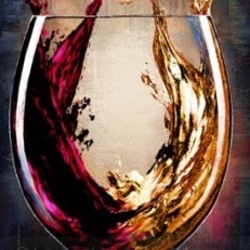

Stone Brewing Co.
Enjoy By IPA
As of the time of writing this review, this is with out question my favorite and best brew I have had so far this year, Perfect IPA in everyway, I have been to Stone Brewery many time, filling up my growlers, and that was the only way, up till now to get Stone's beer so fresh, that is what this is, each batch as a "Enjoy By" date, and every batch is slightly different, this one so far is the best and biggest batch they have produced, Awesome, Awesome stuff, truly Amazing Brew, Cheers!!! — 11 years ago
Cruse Wine Co.
Rancho Chimiles Vineyard Valdiguié 2016
Enjoyed this. First time i had it. Great nose. Very palatable no back end. Nice summer red — 7 years ago
Château Brane-Cantenac
Grand Cru Classé en 1855 Margaux Red Bordeaux Blend 2012
Valentine's Day 2018. Paired with Roasted Butterflied Lobster Tail, and a Chocolate Truffle Torte. Notes to come:)
- - Brane-Cantenac is a special wine to my wife and I. It is the first Bordeaux Chateaux we ever visited on our honeymoon. It is this little modest estate sitting in the shadow of the oversized Chateaux of Cantenac Brown, but it couldn't be more opposite when you bring the wine into the mix. Classic Margaux nose but less funk and more fruit. Terrior is hard to define, but if you have been somewhere memorable, and have a wine or food from that place.. it's when you have it again and it transports you back that to that place and time that defines that for me. It smells of the cool clean air and morning dew, sunshine, gravel dust from the road we had just driven in on, leather and wood from the barn, and the fresh overtones of fruity wine just beginning fermentation in the production facility that make up the core character of the wine. It is the terrior of Cantenac, and more specifically of Brane-Cantenac.
Paired this with Roasted Butterflied Lobster, and Broccolini, and a little left over for the Chocolate Truffle Torte I made as well for Valentine's Day. — 8 years ago
Three (3) Floyds Brewing Co.
Zombie Dust Undead Pale Ale
Best surprise in a long time, had a bottle sent to me from my college roommate half a country away. Very floral, well hopped balanced with a good malt backbone. A balanced beer more IPA than traditional pale ale. Only 10 days old. Would definitely buy if they ever distributed to CO. — 9 years ago
Bedrock Wine Co.
The Bedrock Heritage Sonoma Valley Red Blend 2013
Bedrock Wine Co.
Griffin's Lair Vineyard Syrah 2009
Very well done. Could use more time in the bottle. Re-check in a year. — 11 years ago
Vinhos Barbeito
The Rare Wine Co. Historic Series Boston Madeira Special Reserve Bual
Sherry, in a it's glorious forms, is the hipster wine of the moment, but Madeira deserves its place. — 11 years ago
Stone Brewing Co.
Ruination IPA
Stone Ruination IPA, one of all time favorite IPA, perfect balance, brilliant! — 12 years ago
La Jota Vineyard Co.
Howell Mountain Cabernet Sauvignon 2004
Drinking well today. The remaining 5 bottles should be gone in no time. — 13 years ago

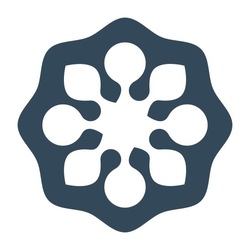


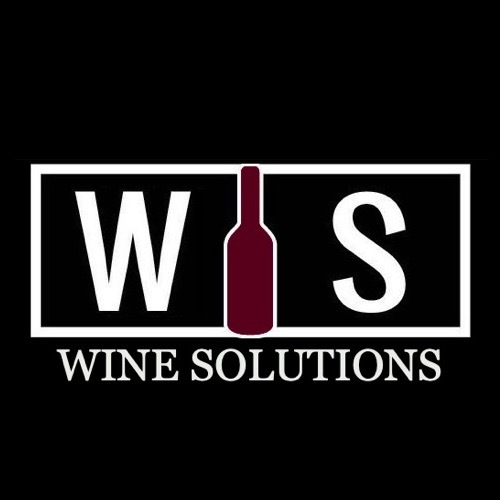

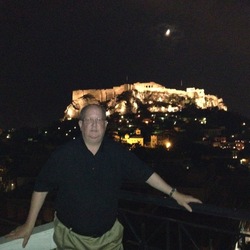













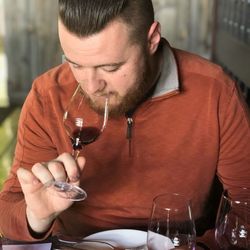



Aaron Rankin
I tasted this bottle 1 and 2 years ago and can say this has evolved nicely with life ahead. It is fuller and more palette-coating than I recall. This time I drank it over 1.5 hours open and it kept positively evolving and blossoming. At the end: Large aromas of succulent red fruit, graphite, and a trace of cracked black pepper. Palette is very tannin forward with med acidity and notes of red fruits, mineral, and a little something green. — 7 years ago